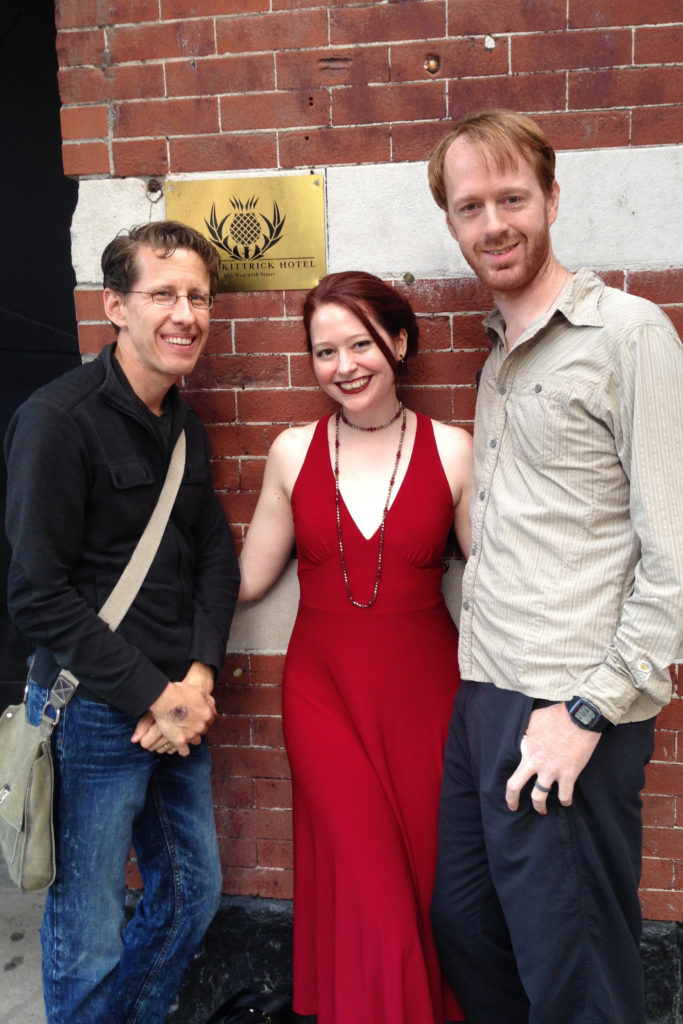99.9% of audiences don’t want to break the rules. But sometimes people go rogue, or more commonly, someone makes a mistake, and when a rule gets violated, the entire experience can break.
(See my post on the importance of rules in immersive theatre here.)
RULES FOR PUNCHDRUNK’S SLEEP NO MORE (NYC)
- No talking
- No cellphone use
- Follow the guidance of the black masks
- Wear your mask the entire time
Simple. Right? And yet I will hear people talking to their friends, flipping their masks up, or fiddling on their phones in the stairwell (which despite appearances is the highest trafficked area in the entire McKittrick). I WILL SHUSH YOU. If more than 1% of the audience committed these behaviors, I’d stop going. It’s no longer the experience it was designed to be.

No mask? No Mask!
The most unusual rule on this list is “to wear your mask the entire time.” While Punchdrunk’s custom-made bautas do wonderful artistic work (empowering the audience with anonymity, making the otherwise dopey-looking audience look spooky), their primary purpose is practical. Given the show’s large real estate and free-roam structure, audiences need to tell at a glance who’s a performer worth pursuing and who’s an audience member just screwing around.
At one memorable performance, my close friend earned the Malcolm one-on-one. He removed her mask, as in all SNM one-on-ones, to facilitate a more intimate connection. But he had gotten behind in the scene, and when the bell tolled Duncan’s death (Malcolm’s cue to run), he bolted out of there even faster than usual.
He forgot to return her mask.
She bolted out of there, too, tailing Malcolm down to the mezzanine. She arrived but didn’t realize she had no mask, and there was no way for her to get it back behind the locked door set on the fourth floor. Luckily a black mask pulled her aside, pointed out the problem, and asked her to wait. She sat on the couch and waited for her new mask.
Now I advise all of my friends to dress distinctively for immersives. Bold, dressy clothing tends to get the actor’s attention. Plus the performers can quickly confirm that it’s you that’s still following them.

As my interestingly-attired friend sat on that couch without her mask, the audience started noticing her, and a small crowd formed. Unsurprisingly, she felt very self-conscious and did her best to look uninteresting. Which only made her more interesting. For some guests that night, she was a performer. What story of loss or acceptance did they see in her profound stillness?
The mistake wasn’t her fault, and it didn’t take long to correct. But within five minutes, the show broke because of a missing mask. Keep your mask on, please.
At New Year’s Eve 2014, the McKittrick spray-painted their typically white masks gold. A nice aesthetic touch, but practically it was a disaster. The gold didn’t contrast well enough in the dark for me to tell who matters at a distance. And when you’re on the actor-hunt, every second counts. Good designers know these details matter.
I am uncertain that a free-roam immersive can function smoothly without a means to distinguish audience from performers. I could be wrong. Maybe it’s not that hard to tell: audiences tend to be pretty boring. I hear that Speakeasy in San Francisco doesn’t make any distinction, and they even encourage the audience to dress in the time period. I look forward to a trip out there where I’ll wear my white beaded flapper dress, style my hair in bobbish curls, and fool the hell out of everyone.
No talking?
After (only) seven visits, I am still uncertain if Sleep No More wants me to hew religiously to the no-talking rule. It’s definitely a clear requirement out in the open world of the hotel. But what about in the locked door one-on-ones?
Most of the one-on-ones scripts don’t invite any response from you, but a few of them do present the possibility for you to talk.
Light spoilers ahead. I am often near Malcolm at the right time (or perhaps I’m subconsciously addicted to his wall slams), so I’ve won his one-on-one four times. Malcolm asks “Who are you?” Seems like he’s asking a question, right? I’ve offered four different actors different responses: Donalbain (my favorite), the Raven Queen, “never more.” In all of these Malcolm fails to acknowledge my response, and he never plays back in turn. In fact, I think he just slams me harder. Once I even filled out his line “Me thought I heard a voice cry” with “Sleep no more! Macbeth doth murder sleep!” (Okay, that was just pure cheek). From none of the actors, did I get a clear behavioral signal that he wanted me to answer his question.
But then why ask the question? This rule has me very confused! I’ve recently stopped answering Malcolm and focused on enjoying the ride instead. I think he prefers it that way. I think, even with the door locked and your mask off, Punchdrunk wants you to stay silent. The performer is the one showing you incredible things, after all, and (as witnessed above) he’s got a schedule to keep.
While we may like exceptions to rules in life, designing for a little exception in an immersive experience will only sow audience confusion and lead to behaviors you didn’t intend.
(See: Breaking the Rules: Third Rail Projects for more).

